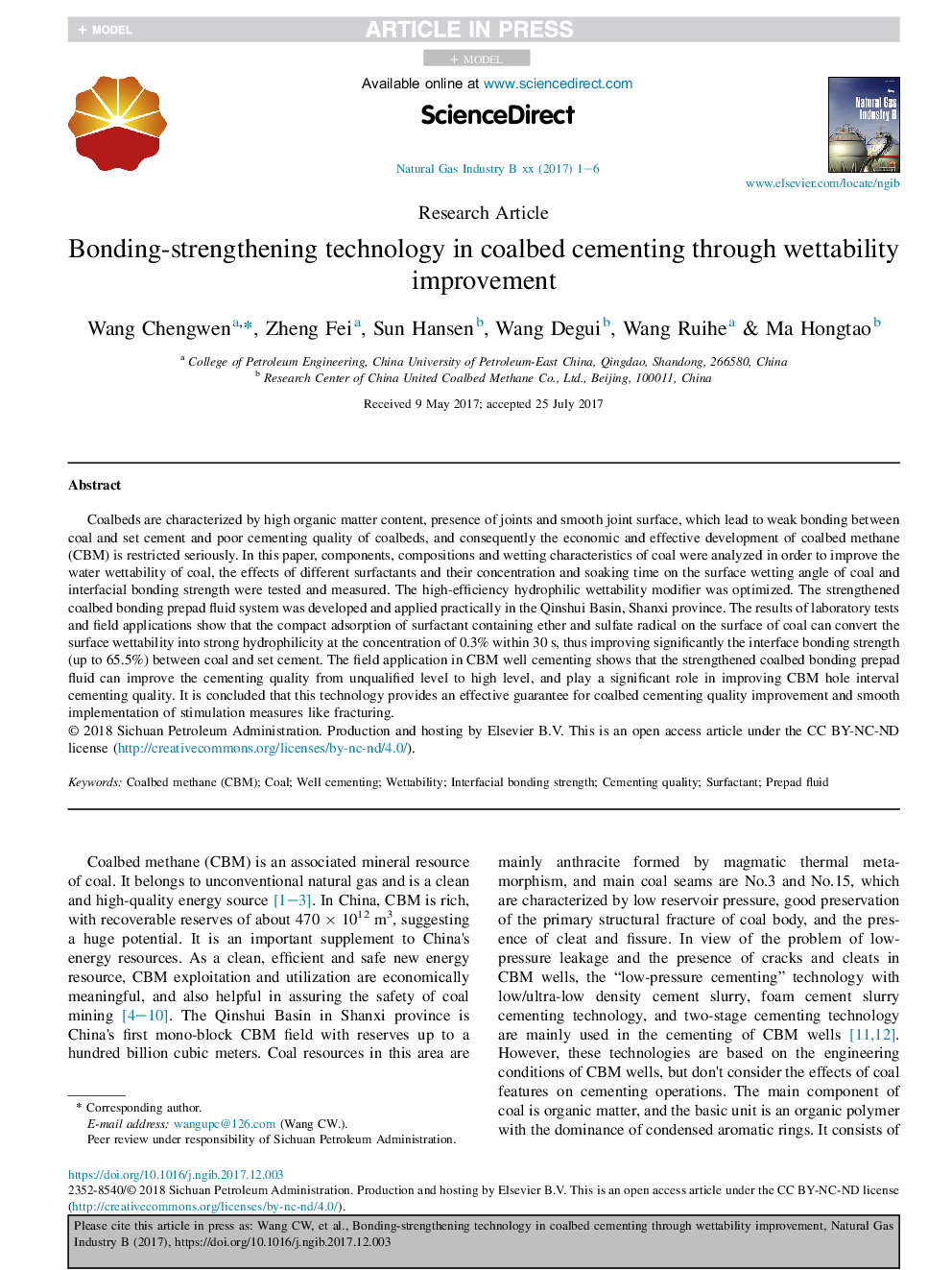| Article ID | Journal | Published Year | Pages | File Type |
|---|---|---|---|---|
| 8109603 | Natural Gas Industry B | 2018 | 6 Pages |
Abstract
Coalbeds are characterized by high organic matter content, presence of joints and smooth joint surface, which lead to weak bonding between coal and set cement and poor cementing quality of coalbeds, and consequently the economic and effective development of coalbed methane (CBM) is restricted seriously. In this paper, components, compositions and wetting characteristics of coal were analyzed in order to improve the water wettability of coal, the effects of different surfactants and their concentration and soaking time on the surface wetting angle of coal and interfacial bonding strength were tested and measured. The high-efficiency hydrophilic wettability modifier was optimized. The strengthened coalbed bonding prepad fluid system was developed and applied practically in the Qinshui Basin, Shanxi province. The results of laboratory tests and field applications show that the compact adsorption of surfactant containing ether and sulfate radical on the surface of coal can convert the surface wettability into strong hydrophilicity at the concentration of 0.3% within 30Â s, thus improving significantly the interface bonding strength (up to 65.5%) between coal and set cement. The field application in CBM well cementing shows that the strengthened coalbed bonding prepad fluid can improve the cementing quality from unqualified level to high level, and play a significant role in improving CBM hole interval cementing quality. It is concluded that this technology provides an effective guarantee for coalbed cementing quality improvement and smooth implementation of stimulation measures like fracturing.
Related Topics
Physical Sciences and Engineering
Energy
Energy Engineering and Power Technology
Authors
Chengwen Wang, Fei Zheng, Hansen Sun, Degui Wang, Ruihe Wang, Hongtao Ma,
